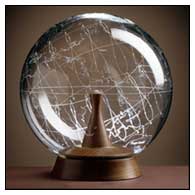 Vegetable
Ivory - The story of the Tagua Nut
Vegetable
Ivory - The story of the Tagua Nut
The nut comes from a palm like tree that grows to a height of 20 to 30 feet in several tropical regions of South America. The nuts range in size from that of a cherry to that of a grapefruit and average about the size of a walnut. Chemically the nuts are pure cellulose and before the nuts mature they have a milky sweet liquid in the center. When ripe the nuts fall to the ground and are gathered and dried from four to eight weeks after which they become extremely hard. The nut is not toxic. Color varies from blue-white to amber with most nuts ivory-amber.
The ivory nut is close grain and very hard. The cellular structure and grain is similar to that of elephant ivory, but is more dense and resilient. It resembles the finest ivory in texture and color and is slightly softer than mammal ivory and usually contains a void in the center of the nut. Their are several names for the nut, but the most common is the "Tagua Nut". Its similarity to elephant ivory has been known by craftsman for years and is frequently passed as elephant ivory on objects fashioned from it. It being so much like mammal ivory pieces carved from it are sold at the same price as elephant ivory and in some cases much more.
For over two hundred years vegetable ivory has been used by ivory carvers in the making of netsukes, dice, dominoes, and chess pieces. Other uses found were cane and umbrella handles, pipes, mah-jongg tiles, sewing needle cases and the fine art of scrimshaw. Religious figurines were carved as were many toys. In the late eighteen hundreds up through World War II this ivory nut was used to make some of the finest buttons in the clothing industry. Some were even used on United States Army uniforms. For close to eighty years the ivory nut was a commodity of global importance and factories on three continents used to manufacture articles of utility and luxury. The coming of synthetics killed the world ivory nut market. The vegetable ivory nut has begun a come back because of the slaughter and near extinction of mammal ivory, e.g., elephant, whales, walrus and other species.
The Tagua nut is used as the pointer at the center of the Wenger Sundial.